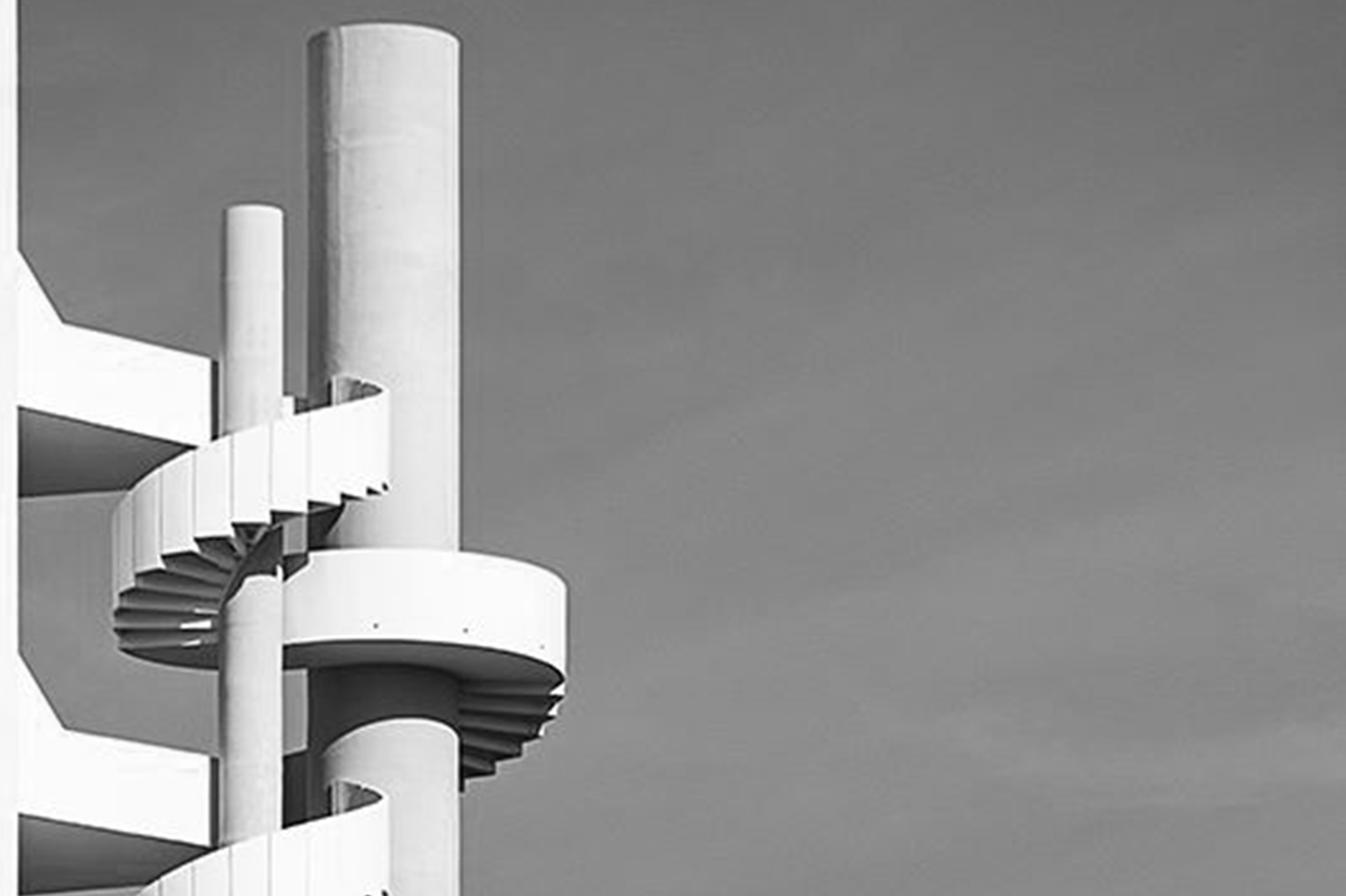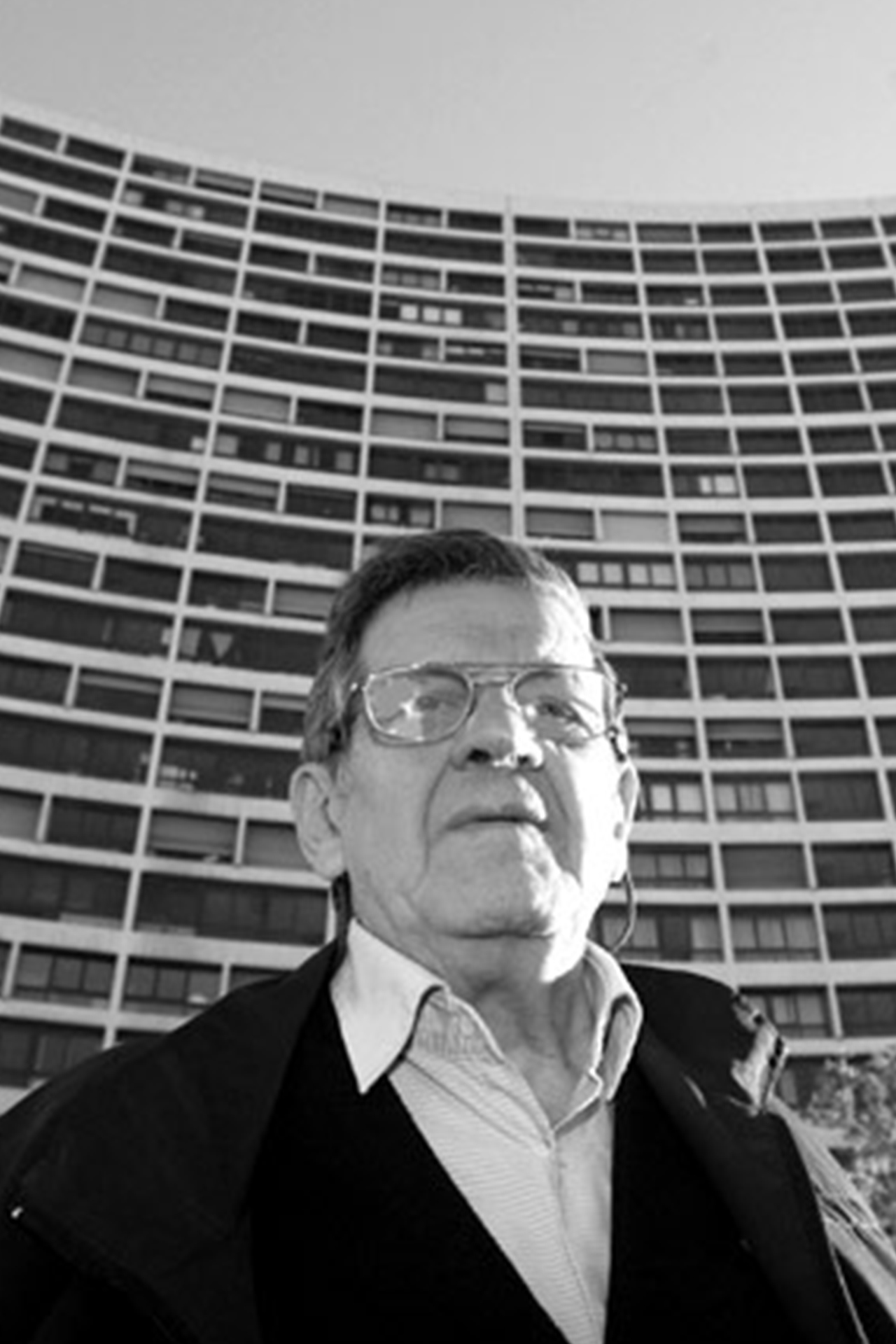
Built by Fernand Boukobza in 1966, the « Brasilia » building, which has been awarded the « Patrimoine du XXème siècle » (20th century heritage) label, is an emblematic figure in the Marseilles landscape.
At 20 storeys high, the building comprises no less than 221 duplex flats, reminiscent of the characteristic organisation of a housing unit, as in Le Corbusier’s nearby Cité Radieuse. Its impressive framework opens its concave curve to the north, in order to obtain the largest façade development to the south. Its remarkable double-revolution emergency staircase is sculptural, a real lift to the sky.
Entirely made of concrete and including pilings, duplexes and sumptuous circular volumes, the Brasilia is a symbol of the modernity of the time.

Born in 1926 in Algeria and dying in 2012 in Marseille, Fernand Boukobza was an architect sensitive to American modernity. He was inspired by the experiments of Richard Neutra, Frank Lloyd Wright and Marcel Breuer, but also by Le Corbusier and his works in concrete.
In his architecture, he uses concave curves and transforms functional elements into real sculptural objects, such as the stairs of Brasilia. Among his achievements are the twin houses of the Parc Talabot and the housing unit Le Brasilia, both of which have been awarded the title of 20th century heritage. Alongside Pierre Jameux, Pierre Mathoulin and Pierre Meillassoux, he also participated in the construction of the famous La Castellane housing estate.


